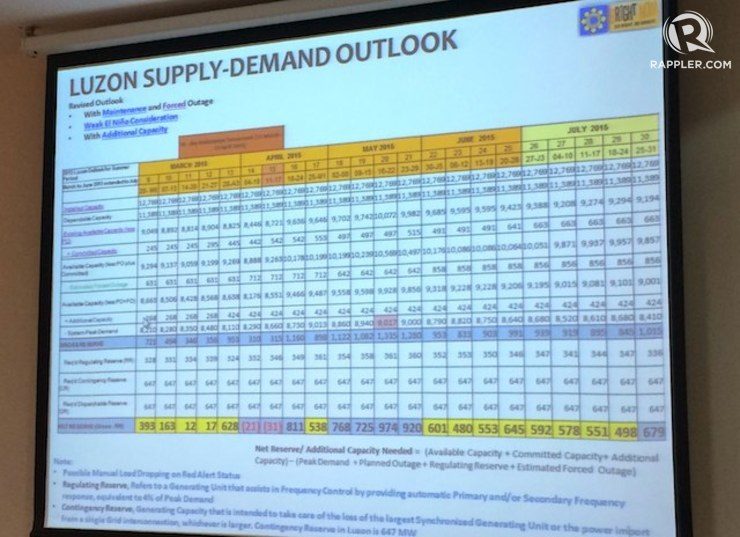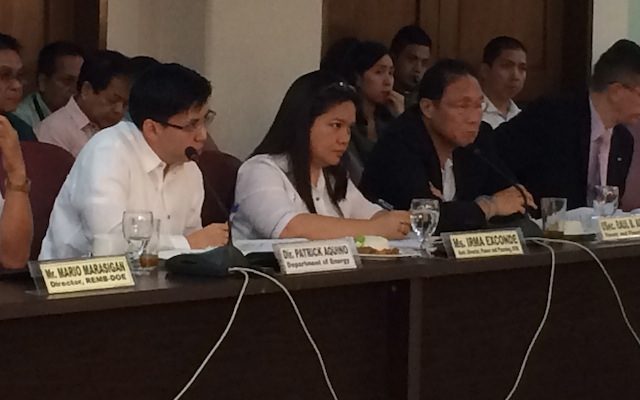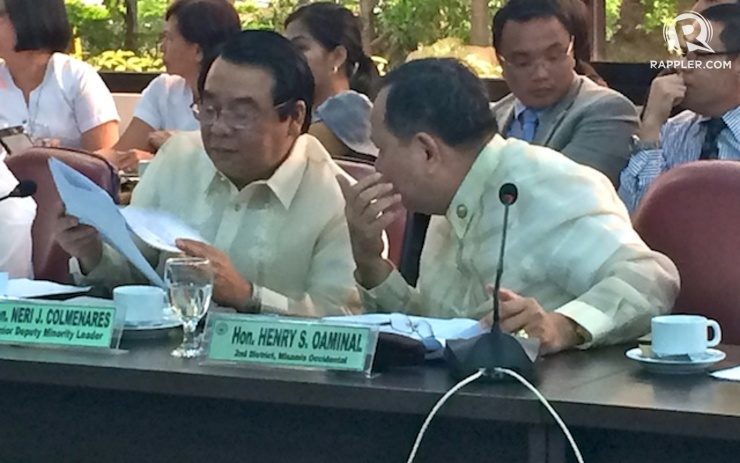SUMMARY
This is AI generated summarization, which may have errors. For context, always refer to the full article.
MANILA, Philippines – Seeing that the impending energy crisis doesn’t seem to be as bad as projected, a House committee is set to water down its original proposal to grant special powers to President Benigno Aquino III.
The hearing of the House committee on energy on Monday, October 20, marked the first time that the Department of Energy (DOE) presented a detailed outlook of the power supply and demand levels for 2015.
Their data showed that there will only be a supply shortage in the first two weeks of April. In a worst case scenario, the shortfall will amount to 31 megawatts only. This would be equivalent to one-hour rotating brownouts for one day in a week, said National Grid Corporation of the Philippines manager Fidel Dagsaan Jr.
The figure is down from DOE’s earlier projection of 3 to 5-hour rotating brownouts for 5 days in a row.

If there is sufficient power for the rest of summer, why is DOE asking Congress to give the President special powers to purchase or lease additional generating capacity, among others?
DOE admitted that the projected shortfall is meant as a contingency for reserves, and does not refer to the energy supply per se. DOE Assistant Director Irma Exconde said there must be at least 647 megawatts in reserves at any given time.
Adding the projected 31 megawatt-shortfall in April, DOE is requesting for up to 700 megawatts of additional generating capacity.

DOE legal counsel Patrick Aquino said the figure covers the possibility of forced outages.
“Data shows there is no shortage but historically, in reality, there becomes one. History would show that we did experience manual low droppings, yellow alerts, red alerts (even if estimates did not show this). We have been factoring in forced outages because before, it was not considered. And based on the age of our plants, we don’t have the youngest power plants,” Aquino said.
While data shows energy supplies will only hit red alert for two weeks in the next summer, Exconde said there have been cases in the past where powerplants went out, causing shortfalls of 1,500-1,700 megawatts at a time.
Inaccurate picture
Lawmakers scored DOE representatives for painting an inaccurate picture of the supposed energy crisis in the past few months. Energy Secretary Jericho Petilla, who first proposed the idea, did not attend the hearing.
Even lawmakers who had previously expressed willingness to allow the President the option to approve rents or purchase additional generating capacity – including Misamis Occidental 2nd district Representative Henry Oaminal and Akbayan party-list Representative Walden Bello – now have misgivings about the proposal.
Bayan Muna Representative Neri Colmenares said the situation does not warrant spending P6 billion to P10 billion in public funds to contract additional power just for contingency.
Besides, the government still has the option of implementing the Interruptible Load Program (ILP), a voluntary mechanism where customers with large power loads such as factories and malls will be asked to operate their own generator sets during peak hours.
House to focus on ILP

As of Monday, records submitted to the House energy committee show that private sectors have committed 847 megawatts, with a de-rated or usable capacity of 593 megawatts, under the ILP, just a little more than 100 megawatts short of what the DOE is asking for.
After lawmakers expressed doubts on the urgency of passing the resolution on special powers, Energy Undersecretary Raul Aguilos conceded that the ILP can be used a first option, with contracting power as the last choice, provided that the government can convince companies to pledge at least 700 megawatts of energy as soon as possible.
With the development, Umali said the joint resolution seeking to address the power situation would focus on ILP instead of contracting power.
“The only reason we’re rushing this up is so we can beat the deadline for contracting or leasing additional generating capacity,” Umali said.
“If it’s only ILP, we can pass this even in January. Then there is no urgency to pass this resolution by October 31,” he added.
Umali’s counterpart in the Senate, Senator Sergio Osmeña III also believes that there is no need for emergency powers based on his computations.
Colmenares said the DOE should be put to task for alarming the public.
“I think the DOE has been painting the wrong picture in the last few months. It’s only now that you’re saying that this is an issue of reserves, and this reserve will only be used during outages. It has become muddled. All the while the supply is more than the demand based on your statistics,” Colmenares said during the hearing. – Rappler.com
Add a comment
How does this make you feel?
There are no comments yet. Add your comment to start the conversation.